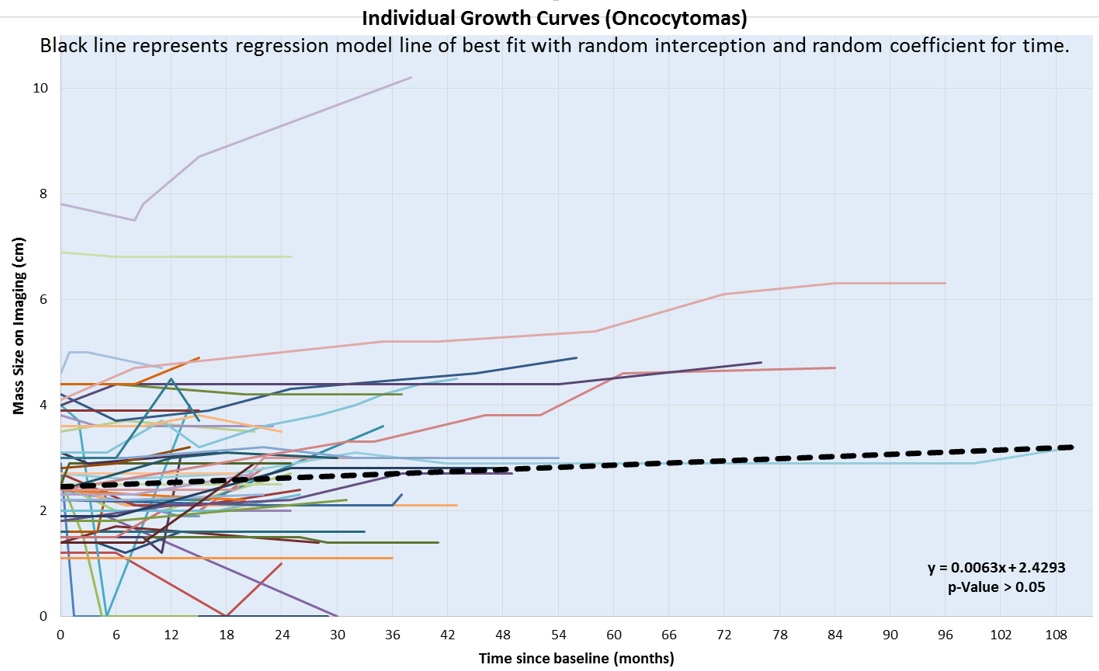|
Back to 2015 Joint Annual Meeting
Biopsy proven Oncocytoma: In Situ Natural History and Clinical Outcomes of 109 lesions
Dayron Rodriguez, Manish Dhyani, Sameer Deshmukh, Glen W. Barrisford, David Kuppermann, Anthony Samir, Ronald S. Arellano, Francis J. McGovern, Michael L. Blute, Adam S. Feldman
Massachusetts General Hospital, Boston, MA
Introduction:The long-term outcomes of renal oncocytomas and their natural history has not been well characterized. In this study we review the in-situ natural history and clinical outcomes of renal mass biopsy (RMB) proven oncocytomas at our institution.
Materials & Methods:We performed a retrospective review of our database of 1233 RMBs between 1998-2012. Lesions with a pathological diagnosis of oncocytoma on percutaneous biopsy were identified. Surveillance and follow-up outcomes were assessed.
Results: A total of 109 lesions had pathological diagnosis of oncocytoma on image-guided (US:CT=7:102) RMB. Median age was 72 years (range:40-91 years) and 69/109 were male. The majority of lesions were solid (n=106,97%) with a median size of 2.5cm (range: 0.9-7.8cm). A total of 54 lesions were followed with a minimum of one additional imaging study. 24 lesions were either stable or decreased in size during a mean 2.4 ± 2.1years of follow-up. Of the 30 lesions which grew in size the mean rate of growth was 0.38cm/year. However, the mean rate of growth for the overall followed cohort was 0.07cm/year. Two patients underwent RFA, 4 underwent nephrectomy, and 2 were re-biopsied.
Conclusions: This is the largest series of biopsy proven oncocytomas reported to date. Renal oncocytomas are slow growing. Our data suggests that lesions of this type with growth rates ≤ 0.3cm/yr may be safely followed with serial imaging.

Back to 2015 Joint Annual Meeting
|

